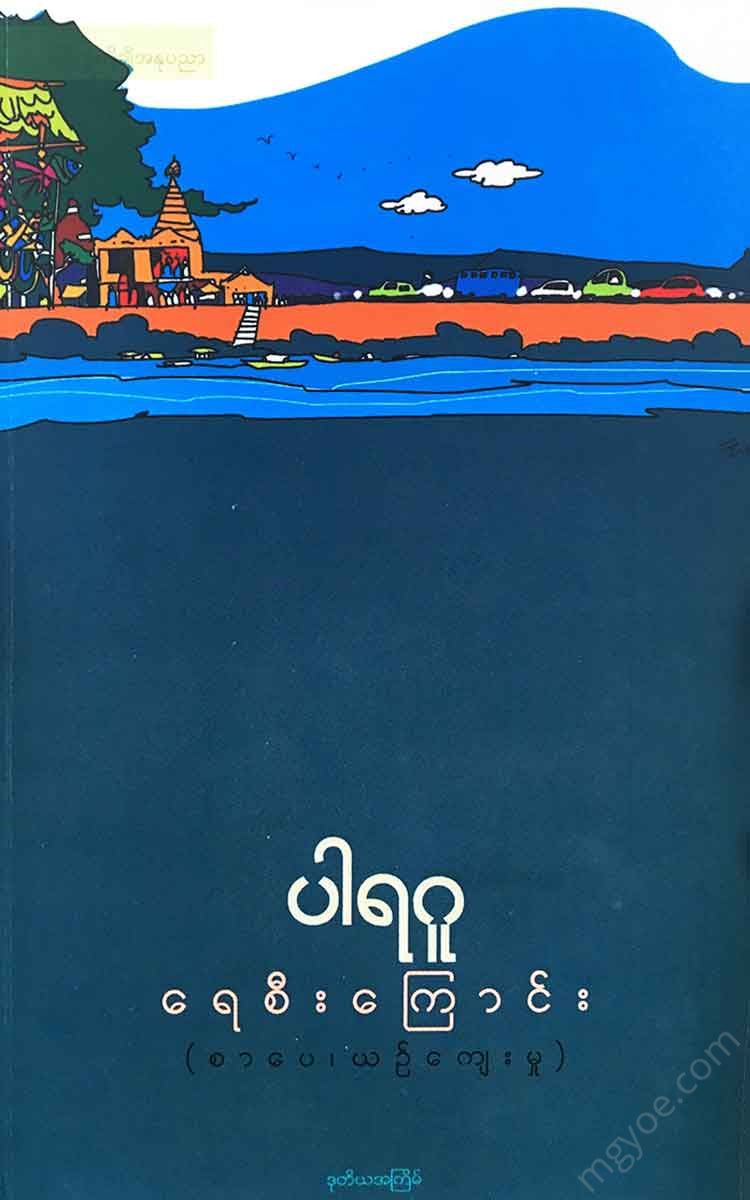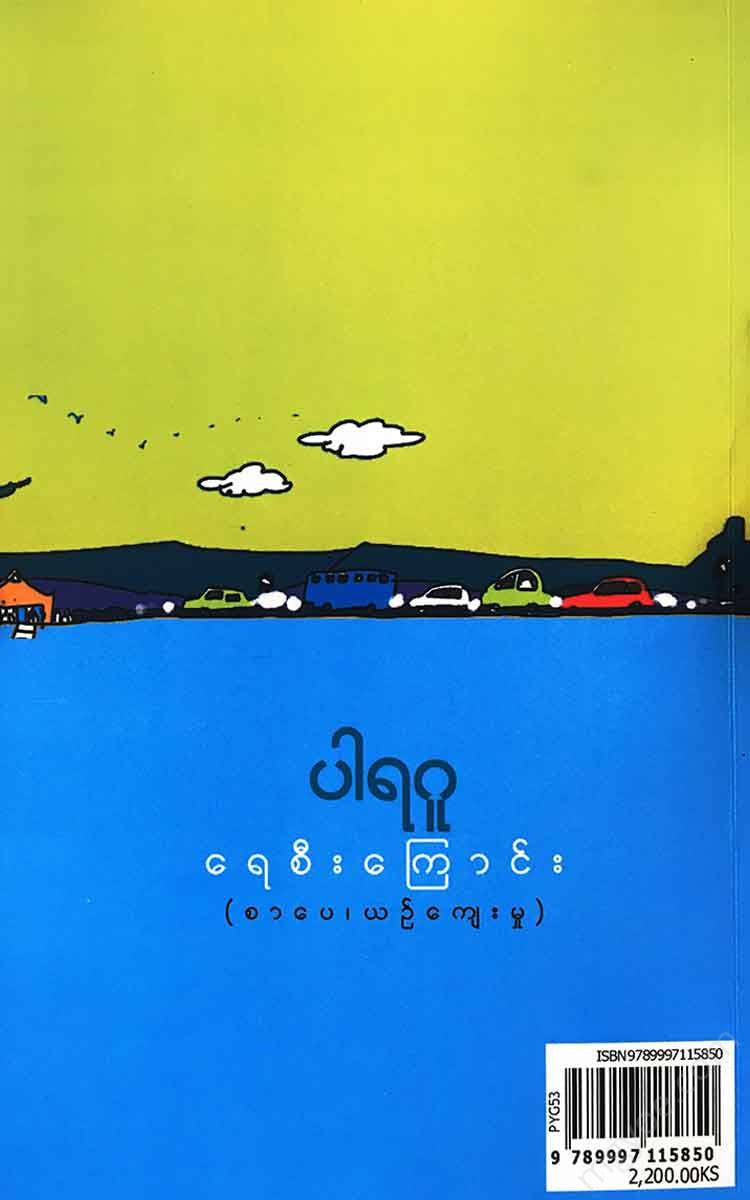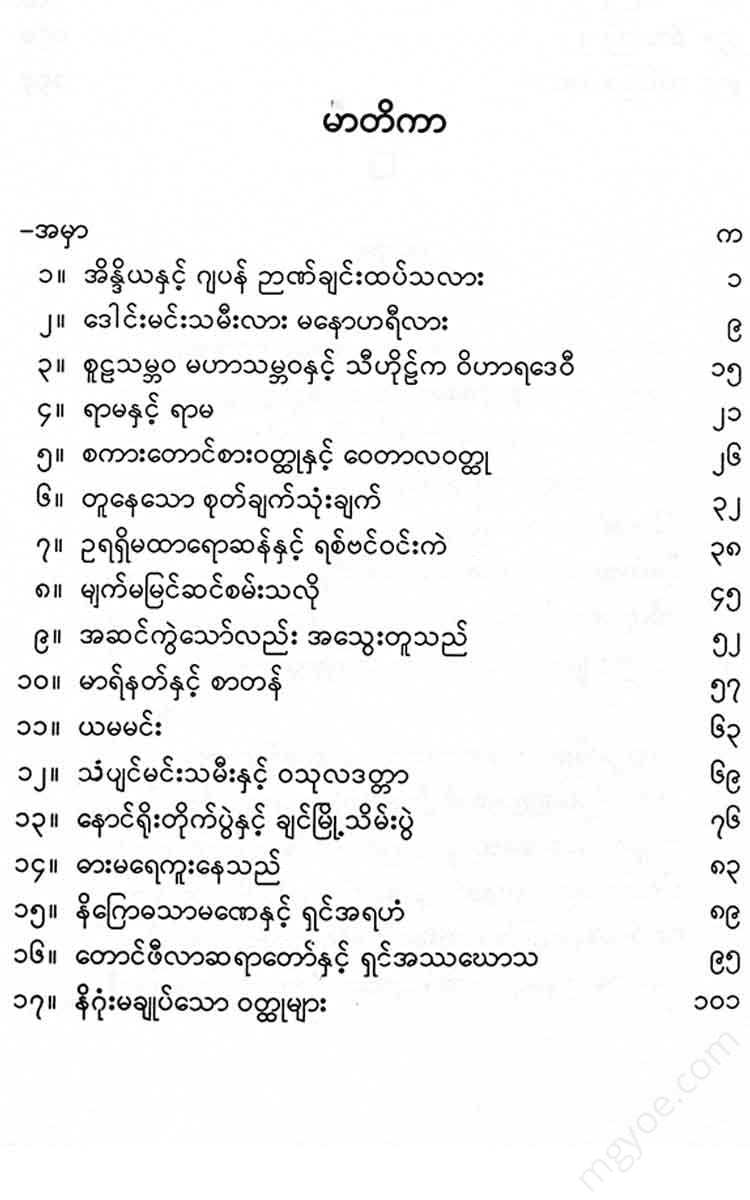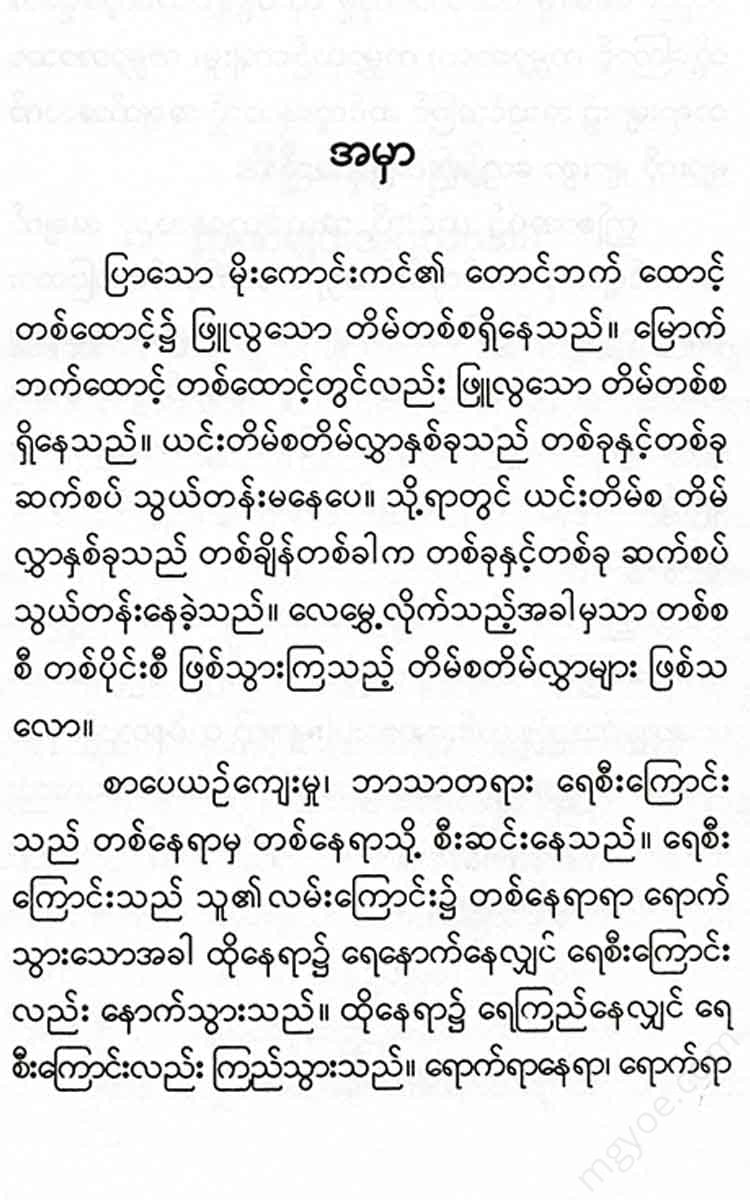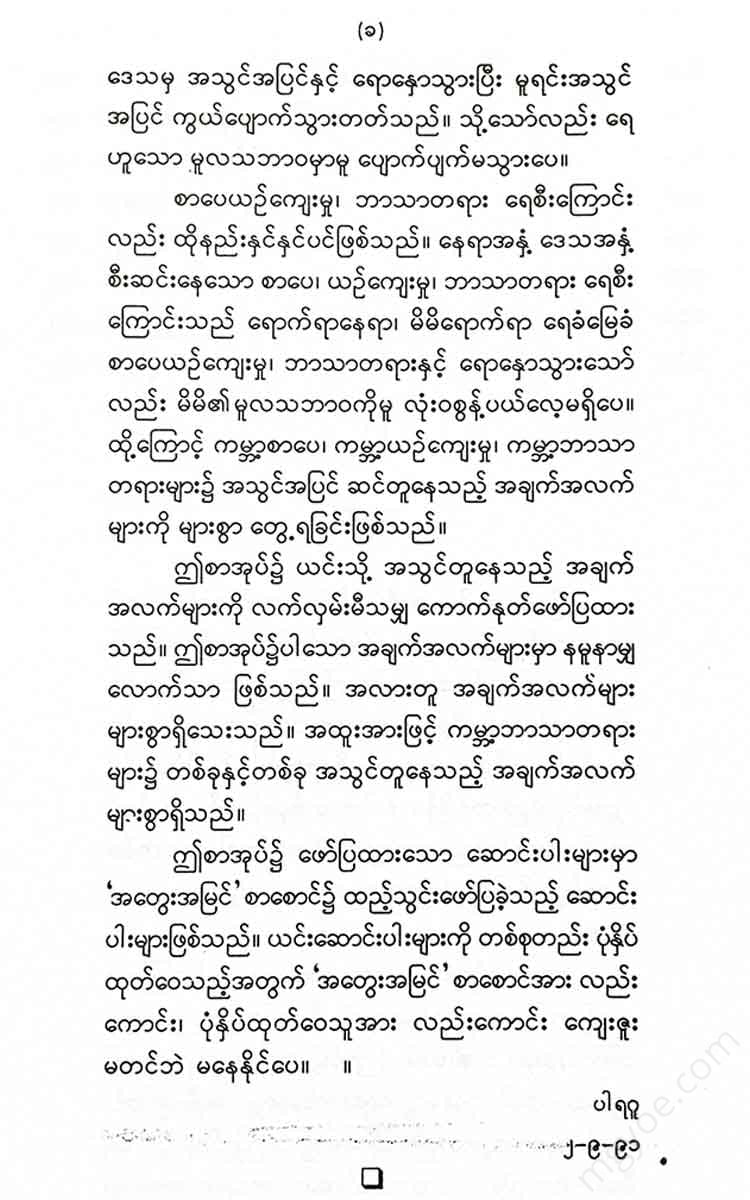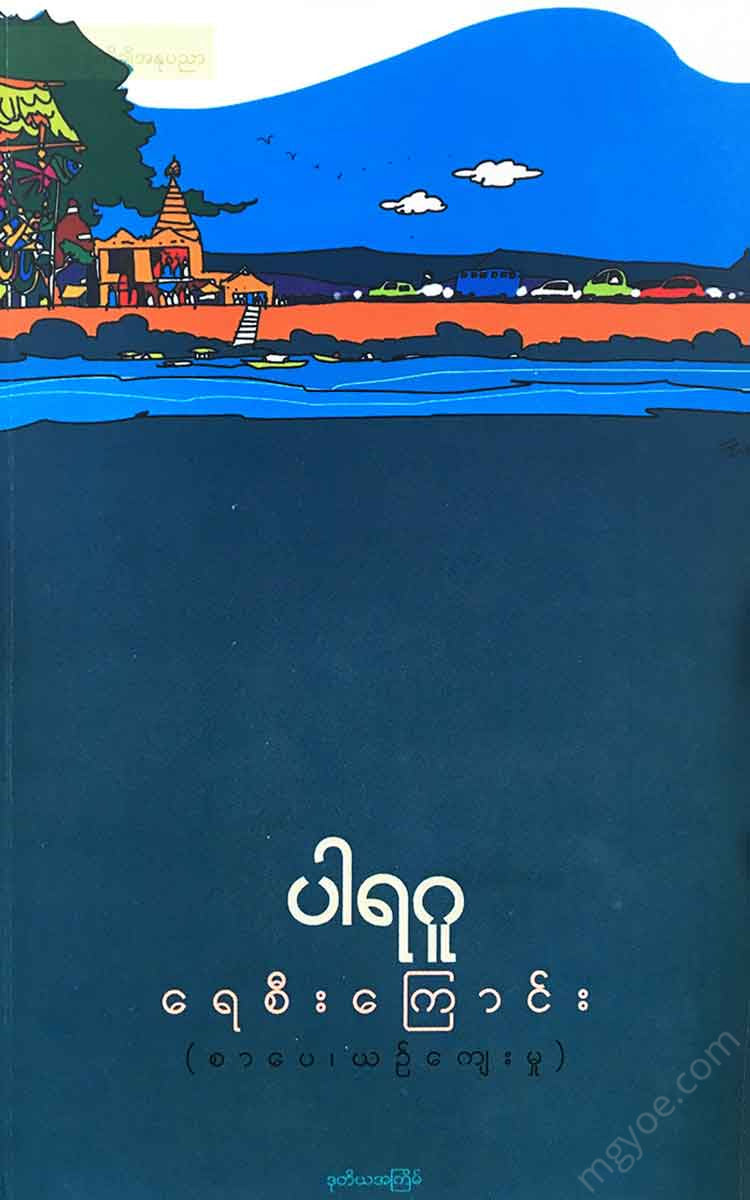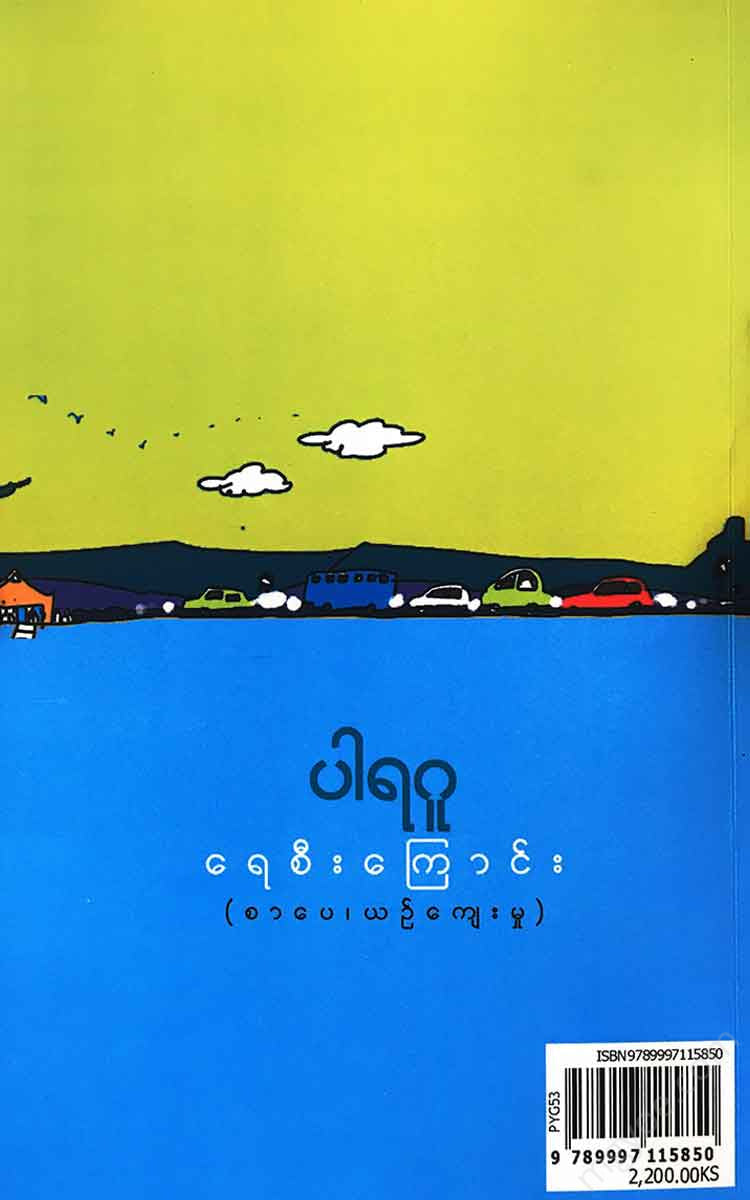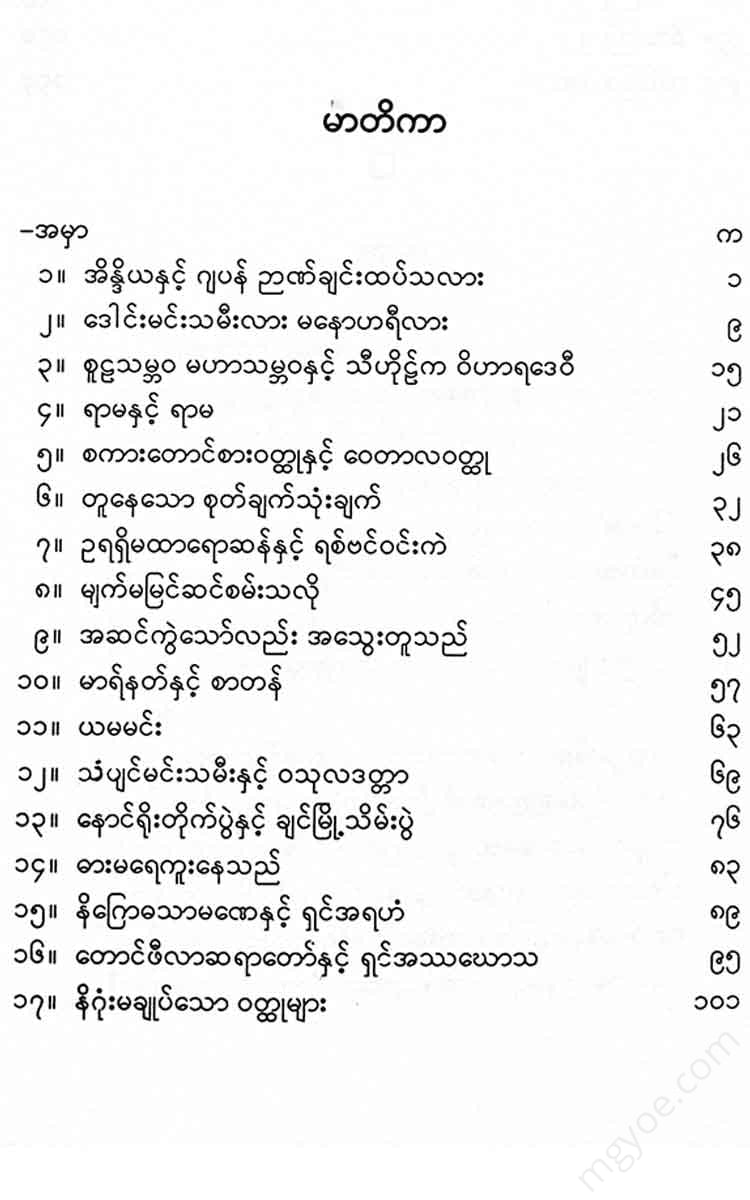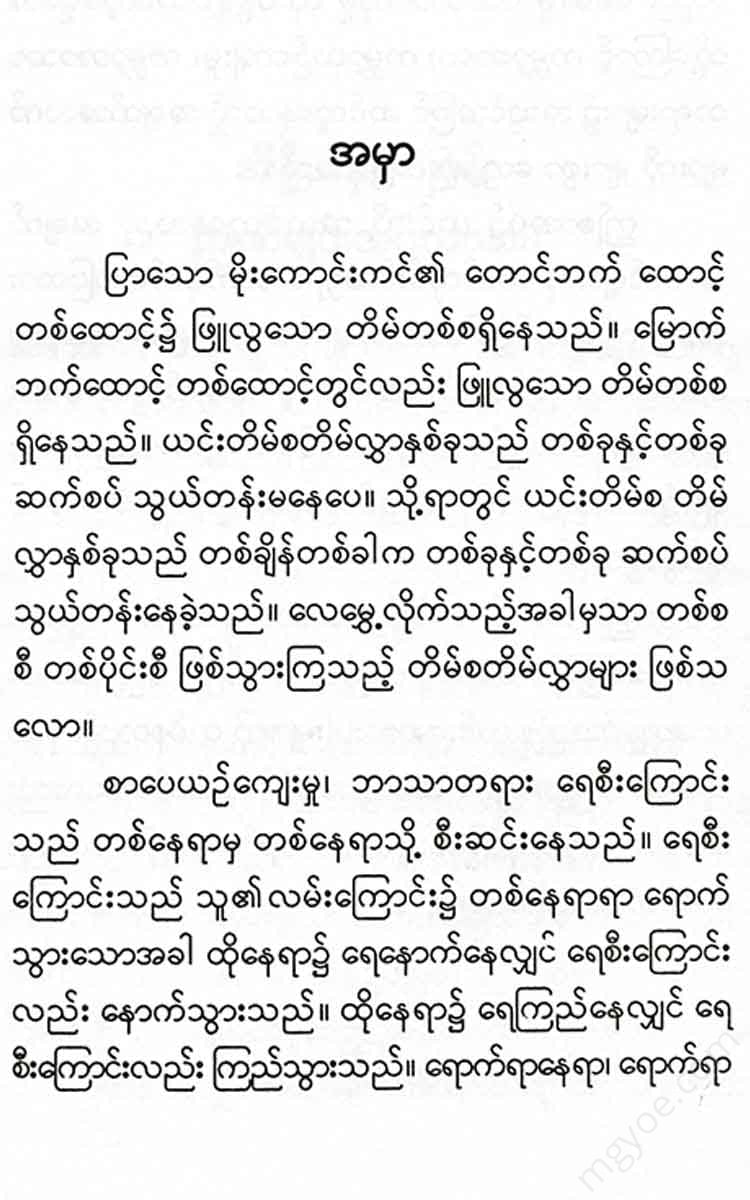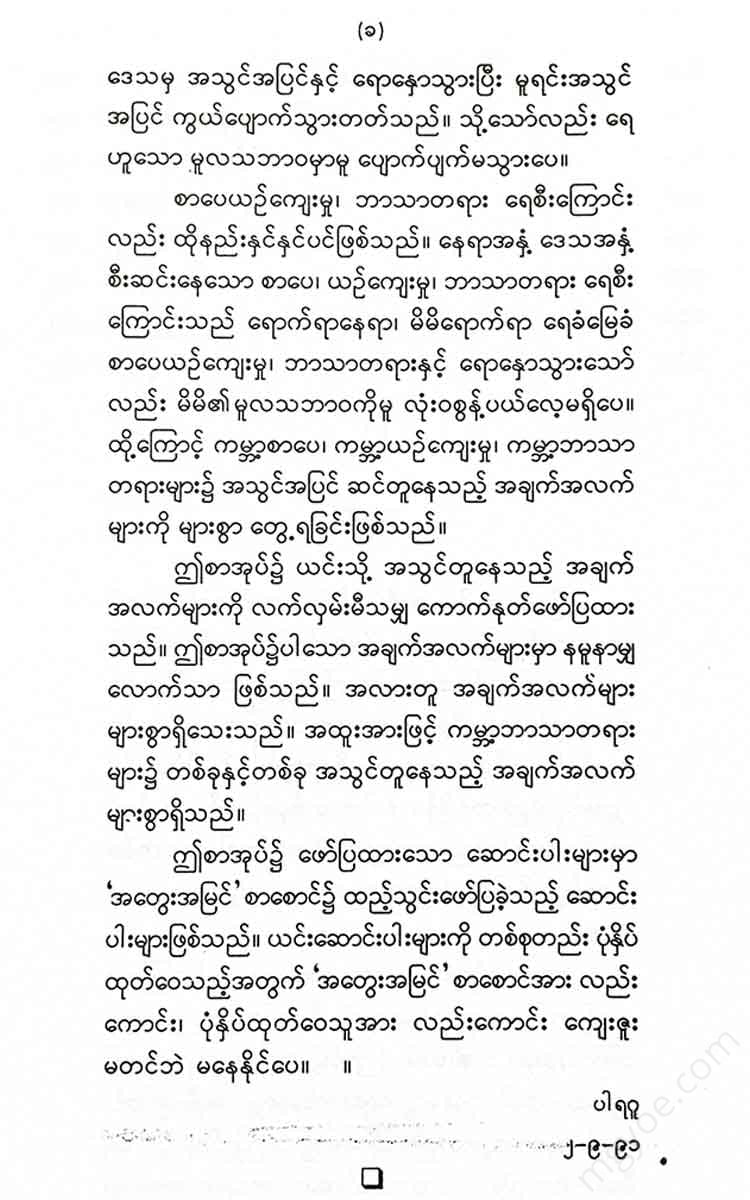စိတ်ကူးချိုချိုစာပေ
Expert - Water flow
Expert - Water flow
Couldn't load pickup availability
" Scholars think alike," he said. Now, when two Indian and Japanese novels are so similar in plot and structure that they are identical...
India and Japan
Do you understand each other?
During the Japanese era, I studied Japanese at the Japanese school in Thanlyin. After two years of studying, I could read Japanese quite well. Among the three Japanese characters, I could even read the word "kan" (fried fish with boiled potatoes). At that time, a newspaper was published in Yangon for Japanese schools. I don't remember if it was daily or every other day. I even wrote an article in Japanese for that newspaper. However, after many years, the Japanese language and words I had learned went back to Japan. I no longer had Japanese in my head. Even if you have mastered a language, you must constantly practice it, speak it, read it, and listen to it. If you completely stop, it is not difficult for the language you have learned to be forgotten at some point.
The last time I had the chance to speak Japanese was in India. When I went to India in 1947, it was summer school, so I was not allowed to go to school, so I waited in Migdawon for two months. During that time, I met two Japanese people from Japan among the pilgrims who had come to Migdawon. I was able to speak Japanese with these Japanese people. At that time, I had not finished my Japanese studies for a long time, so I could still speak. Then, in 1956, I met the Japanese writer Hoshihota again in New Delhi, India. At that time, it had been ten years since I finished my Japanese studies, and I could not speak Japanese well. However, I spoke to Hoshihota in Japanese as I remembered. Strangely, when I spoke Japanese, he turned pale. He did not speak Japanese to me either. He only spoke English. When I spoke Japanese to him many times, he finally could not keep quiet and begged me not to speak Japanese to him anymore. When I was surprised and asked him about it, he said, “Every time I hear you speak Japanese, it reminds me of the Japanese occupation of Myanmar. The fact that you speak Japanese is an example of the Japanese occupation of Myanmar. That’s why I feel bad. Please don’t speak Japanese to me again.” He explained. After I realized that he really felt it, I didn’t speak Japanese to him anymore. Hoshihota is a Japanese novelist who writes about peace. Speaking Japanese to Hoshihota was the last time I spoke Japanese to a Japanese person. After that, I haven’t spoken a single word of Japanese, and I haven’t read a single Japanese. Japanese and Japanese characters are no longer in my head.
The name of the Japanese teacher who taught us Japanese during the Japanese era was "
"Khatok". The teacher also worked as a school teacher in Japan. He was assigned to teach Japanese during the war. The teacher was competent, kind, and patient with the students. One day, in our class, which had already mastered a little Japanese, he taught us a short story by a great Japanese novelist. He wrote the whole story on the blackboard. We followed along in our copybook. Then he asked us to read it. He explained the words we did not understand. The name of the short story was "Kumao no Itao", which means "spider's thread" in Burmese. The name of the novelist was "Yuun no Suke Akutagawa". The writer's writings were often heavily influenced by Buddhist literature and culture. The summary of the story is as follows.
One day, the Buddha was walking on the banks of the lotus pond in the heavenly realm. The lotus flowers blooming in the pond were as white as pearls. The fragrance of the golden pollen grains spread throughout the surroundings. It was morning. At that moment, the Buddha looked down from the lotus leaves on the water. Directly below the pond was hell. He saw Sakanta and other people in hell. Sakanta was a wicked robber who had committed many evil deeds, such as murder and burning houses. However, Sakanta did one good deed. One day, while passing through a forest, he saw a spider crawling on the road. The monkey tried to step on the spider, but he didn't step on it, thinking, "This little creature has a life, so why kill it for nothing? " and he let the spider go.
Looking towards hell, the Buddha remembered the spider he had saved. Reflecting on that good deed, he felt a desire to rescue the spider from hell if possible. As he looked around, he saw a spider weaving a thread among the lotus leaves. The Buddha suddenly pulled the spider's thread and threw it into hell from among the lotus flowers.
In hell, Sankata was hanging in a pool of blood with other inmates. At one point, Sankata was floating in the pool of blood and looking up at the sky when he saw a spider's web falling towards him. He was overjoyed, so he grabbed the web with both hands and climbed up with all his strength. After climbing a long way, he became tired and stopped. He looked down at the ground.
Then he saw other hell-bound people climbing up behind him, holding onto the ends of the spider webs. At this, Sangta shouted, “Hey, who gave you permission to come here? Get down right now!”
As soon as he said this, the spider's thread, which had been intact until then, snapped from the spot where the thread had been hanging. The thread tumbled back into hell.
Standing at the edge of the celestial lake, the Buddha, with great compassion, looked at the one who had fallen back into the pool of blood of hell because of his unjust desire to escape alone, and then continued walking along the path.
A few months after I read The Spider's Thread, which was taught to me by a Japanese teacher, a Japanese soldier belonging to the Nichirenshu Buddhist sect gave me a collection of Japanese religious short stories written by the great writer "Akutagawa". In that collection of short stories was also the story "The Spider's Thread", also known as "Kumao no Ito". I still have that book in my hands today.
Akutagawa's short story " The Spider's Thread" was translated into English by "Damiyo Hirano" in the English-language magazine The Young East published in Japan in 1952. Then, in the book Buddhist Plays from Japanese Literature published in Tokyo in 1962, there is also an English translation of "The Spider's Thread". I also have those books.
Many days have passed. About ten years ago, in January 1974, the journal Bhavan, published in English from Bombay, India, was published to commemorate the centenary of the birth of “Swami Ramathirath”. The journal included writings written about Swami Ramathirath and stories told by Swami Ramathirath. Indian Swamis often use stories when preaching. The Ramakrishna Swami Vedanta, the Ramathirath Swami Vedanta, etc. are well-known stories in the Indian religious and literary world. Among these stories are stories that have been told through tradition, as well as stories created by the Swamijis themselves. One of the stories of Ramathirath Swami is as follows.
“During the great calamity of Dumbhikkhand, a poor woman died. When Yama examined the good and bad deeds of the woman, he found that she had done nothing good, except that she had once given a carrot to a beggar who was hungry. At Yama’s command, a carrot appeared. The carrot would carry the woman to heaven. The woman held the carrot. The carrot carried the woman and climbed up. At that moment, the previous beggar appeared. The beggar grabbed the hem of the woman’s skirt and climbed up. That was not all. A third man appeared and grabbed the beggar’s leg. That was not all. One by one, they clung to each other, forming a long line.
Strangely enough, the old woman pulled her up and many people followed her, but she didn't hesitate at all. She didn't even know that people were following her. So they climbed up and reached the gate of the heavens. When the old woman reached the gate of the heavens, she looked down again. Then she saw a long line of people following her. Here
